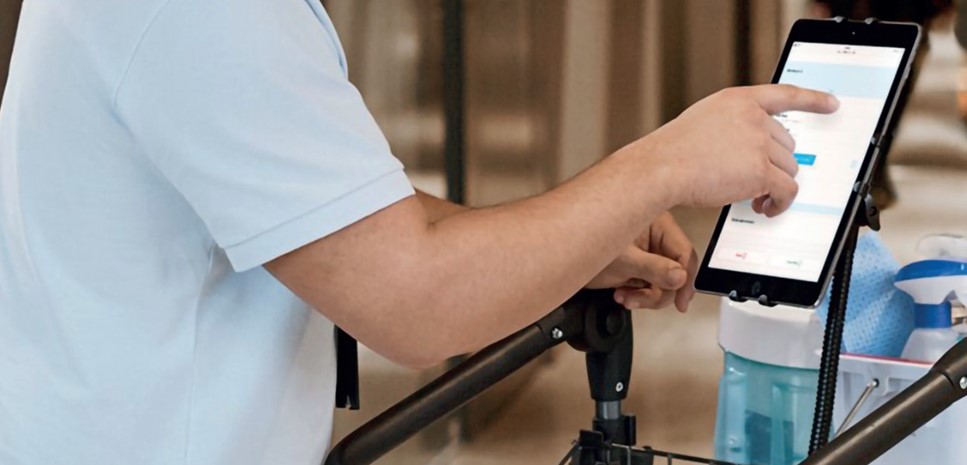Data driven cleaning is an often-heard term when it comes to digitalisation in facility services. Especially in the context of the return to the office. The use of buildings has become more dynamic since the corona pandemic. Flexibility is the key word in the expectations of companies towards facilities service providers. What role can data play in meeting these changed expectations?
What is data driven cleaning?
Data driven cleaning is a vision on cleaning that has been growing in recent years. There is no longer a fixed work programme to be completed. With data-driven cleaning, the cleaning teams work flexibly on the basis of real-time information that is collected via sensors.

What data is collected?
The information collected can be very diverse. For instance: how many people are present in a building? Is this meeting room used? Contain the sanitary dispensers enough soap? Is the rubbish bin almost full? These and many other questions are answered by collecting data. However, sensors can also collect a lot of other data, such as the CO2 and the temperature in a room.
Read also the article about Data in Facility Services.
What do you need for data driven cleaning?
To start with data driven cleaning, you need sensors that collect the data, a software system that processes them and a web application that presents them in an orderly fashion. And, of course, a facilities partner with staff that can handle this data properly.
Is data driven cleaning useful in all types of buildings?
In principle, data-driven cleaning is possible in every type of building. However, the bigger a building is, the bigger the influence of the data will be on the work of the facility services provider. It is important that you discuss what you expect with your facilities partner. Based on this information, the facility services provider will propose a suitable approach.
What are the advantages of data driven cleaning?
Collecting a lot of data is great. But that data is only really useful if it is translated into an appropriate, often flexible cleaning programme. If that happens, you will notice that data-driven cleaning guarantees the following advantages.
Efficiency: cleaning teams no longer need to check every room during every round. Based on the data, they know where an intervention is needed. The web application often even indicates the most efficient route to take.
Increased satisfaction: this is a direct consequence of the previous point. By not having to carry out useless checks or clean rooms ‘because it’s in their work programme’, cleaning staff get more satisfaction from their work. This provides extra motivation.
Quality: a combination of more motivated cleaning staff and a more targeted approach inevitably leads to better quality.
Higher customer satisfaction: when a dispenser is almost empty or a meeting room is used, the cleaning teams intervene immediately. This ensures that the dispensers are always full and the rooms are always clean. This has a positive effect on the perception of cleaning of the building users. As a result, there are fewer complaints. Research by Tork has shown that customer satisfaction increases by up to 30% thanks to data-driven cleaning.

Other services benefit too: data is not only useful for cleaning. It can also be useful for other facility services such as catering, security, reception and so on, to receive signals about the occupancy of a building. If the available data is used for all these services, the facilities service provider can use an integrated approach to improve the building user’s experience. And so he will be better able to achieve the KPIs.
Are there any disadvantages?
Some sensors collect too little information. An example: when someone picks up his jacket in a meeting room, that room is registered as ‘used’. However, there is little chance that cleaning is required. It is therefore necessary to determine in advance what you want to use the information for. On this basis, you then choose the system that best meets these expectations. Your facilities partner can advise you on this.
And what about the price tag? It requires a basic investment, that is a fact. But because the collection and processing of data results in a more efficient approach, you will soon earn that back.

Conclusion
Data collection will only become more important in the future. Data driven cleaning is heading in the same direction. But no matter how you look at it, cleaning staff will play a central role in data-driven cleaning. After all, data is only useful if the cleaning staff draws the right conclusions from it. Data is therefore an important tool. They ensure that the cleaning staff will be able to work even more efficiently, result-oriented and proactive.
